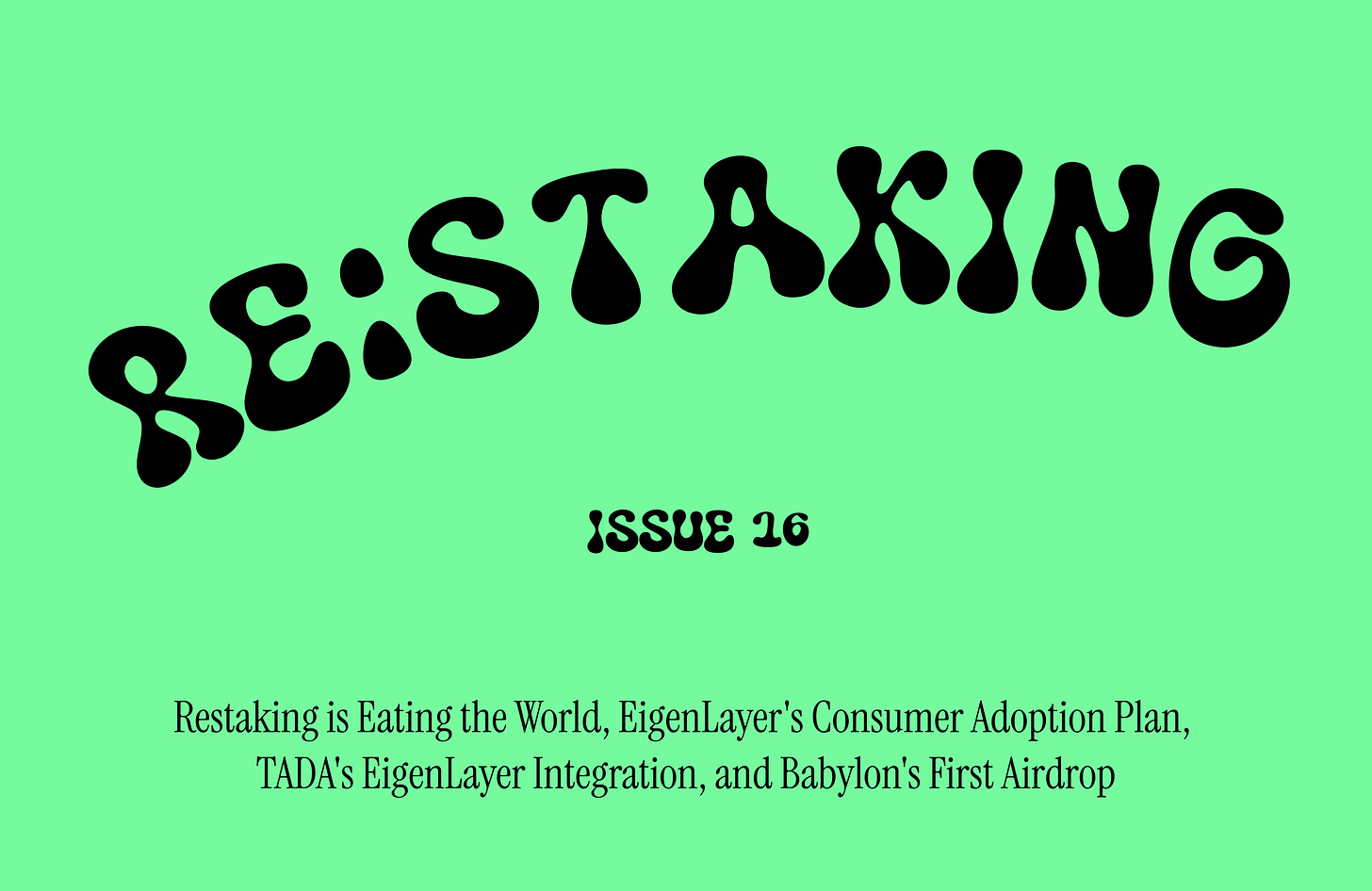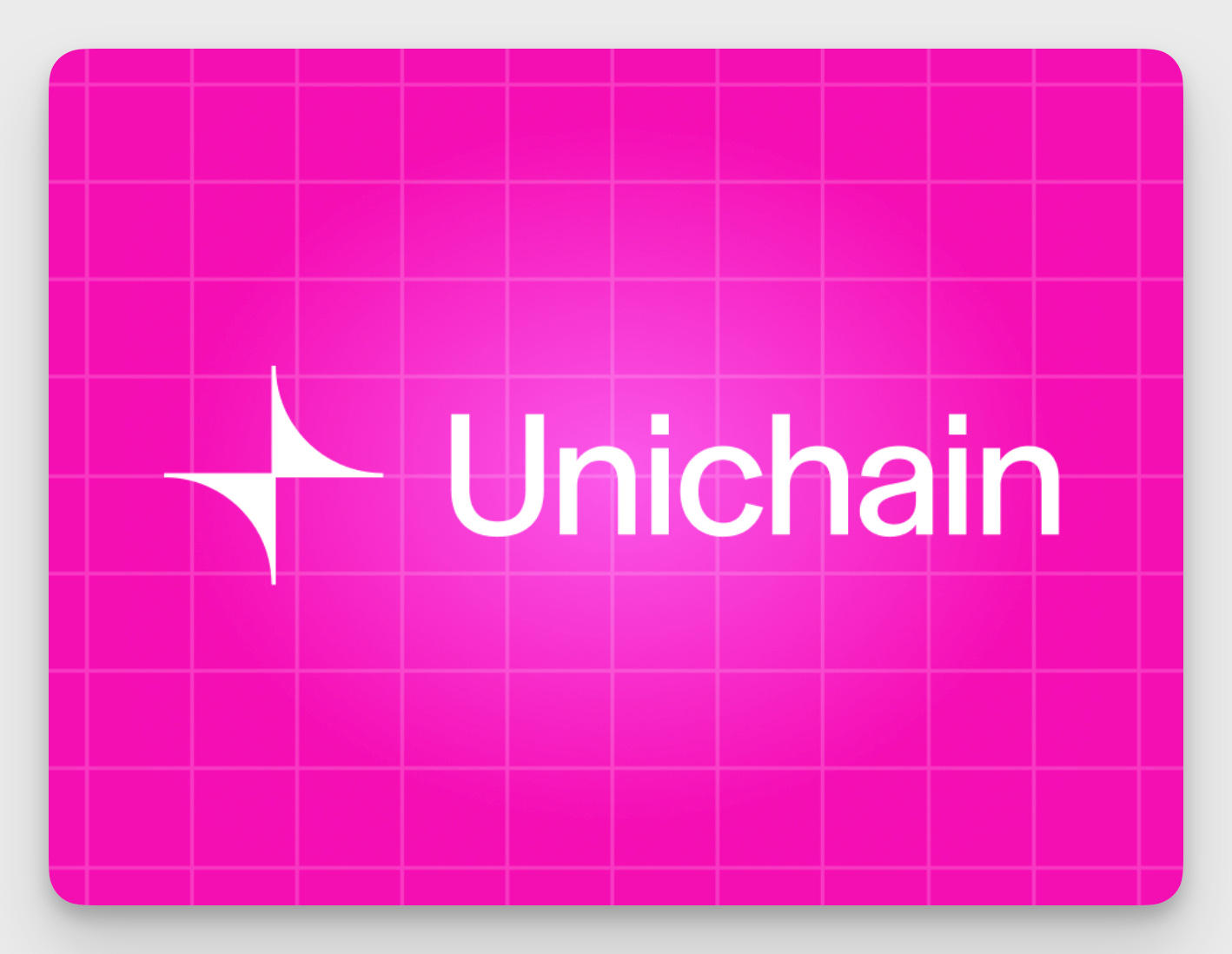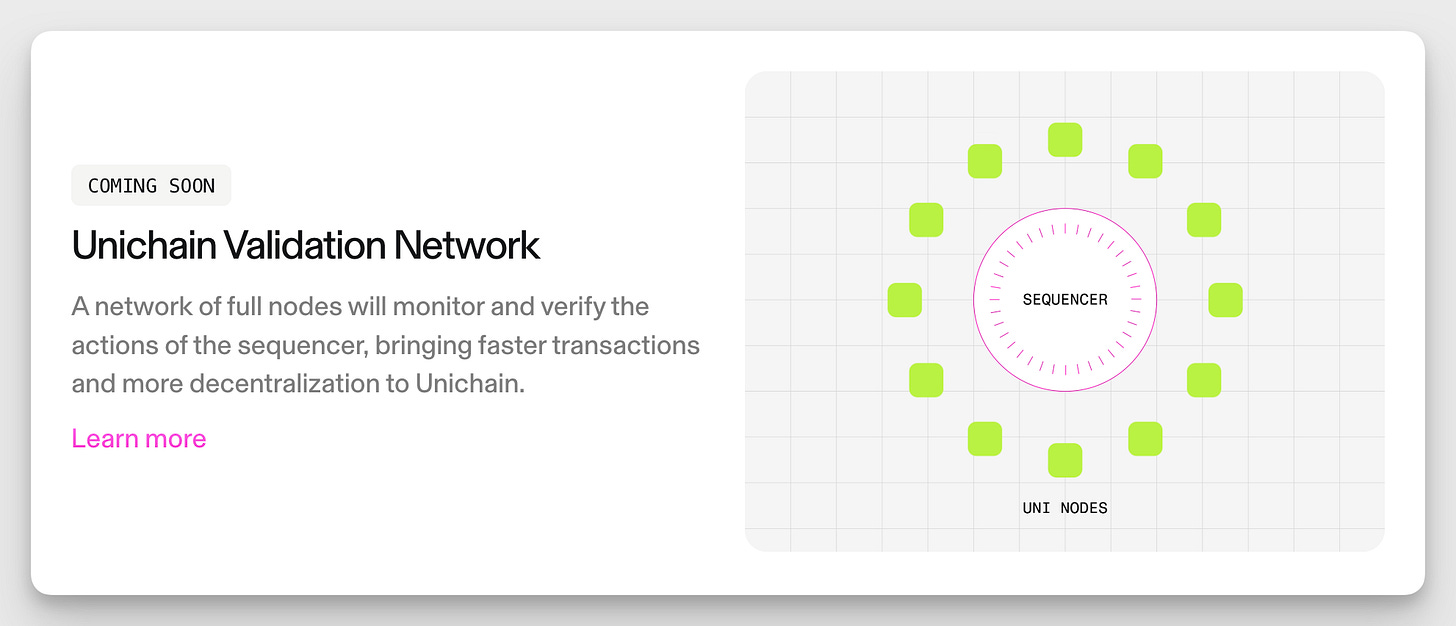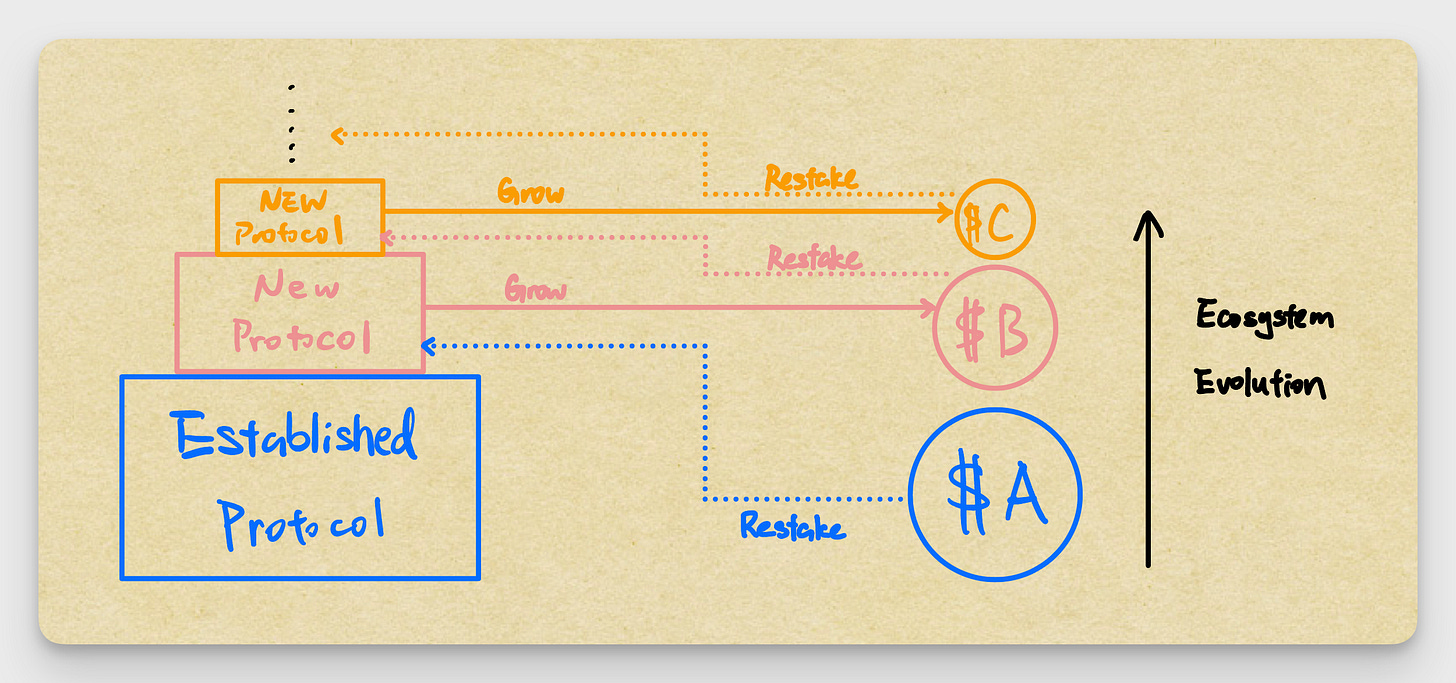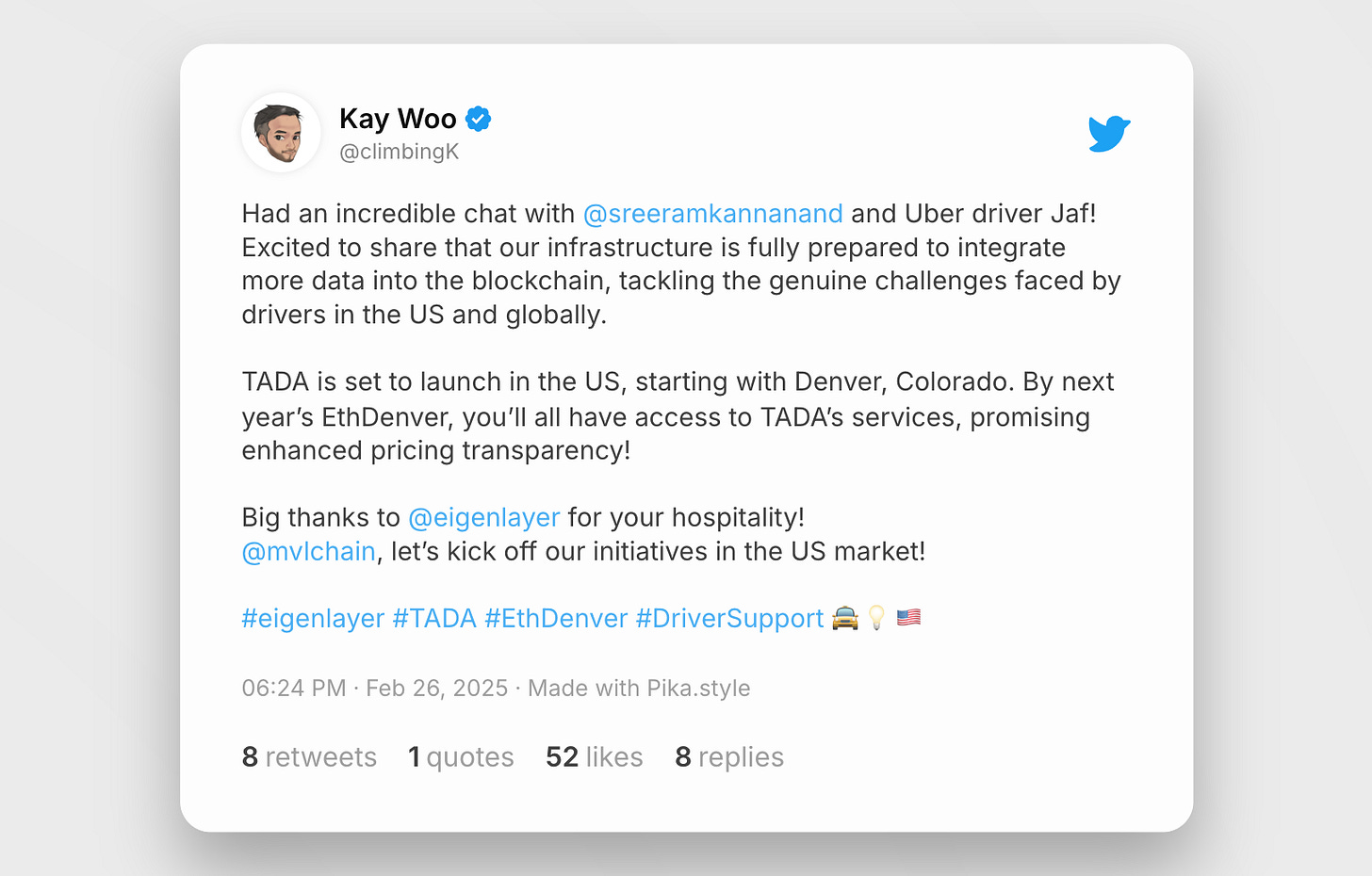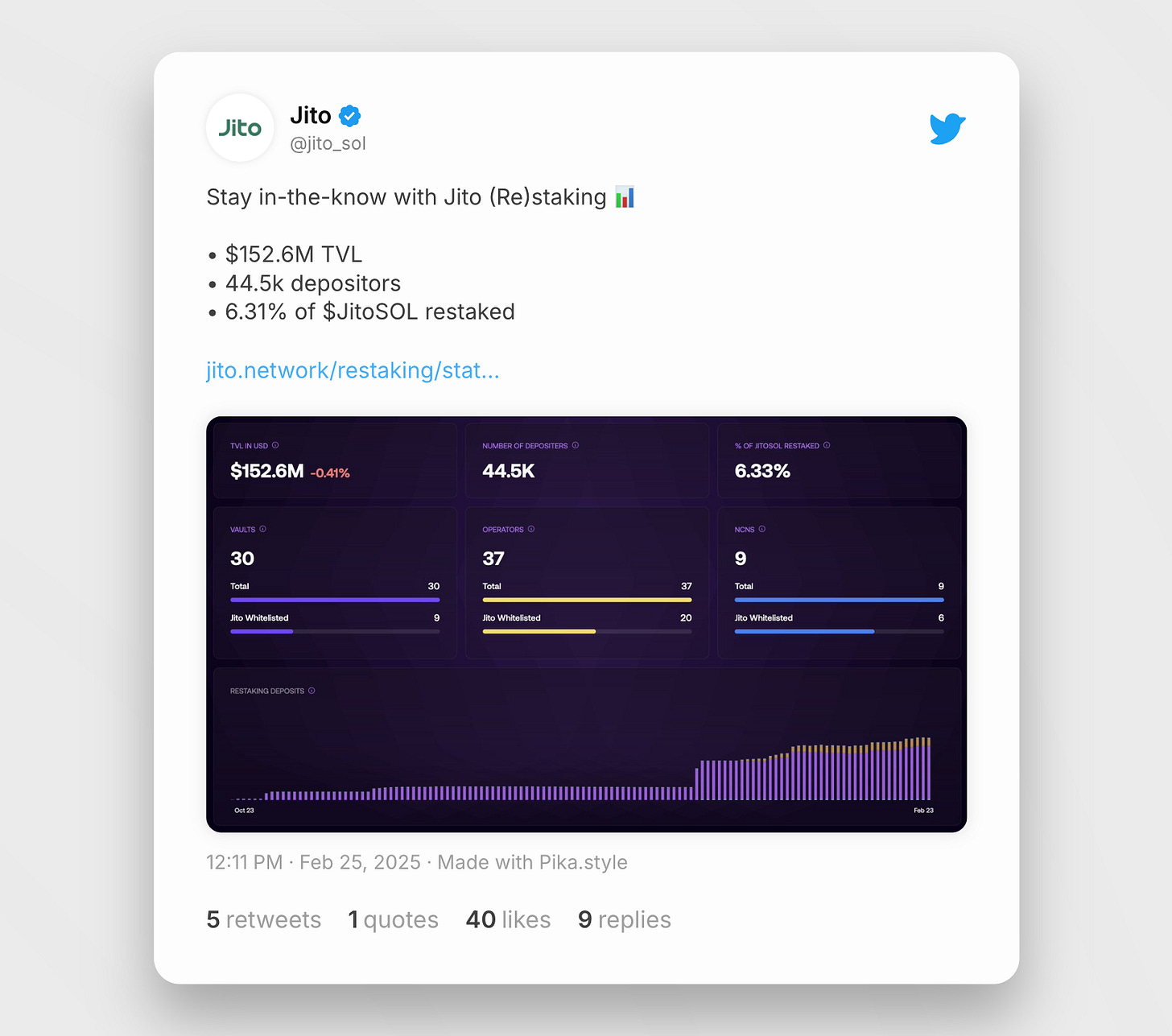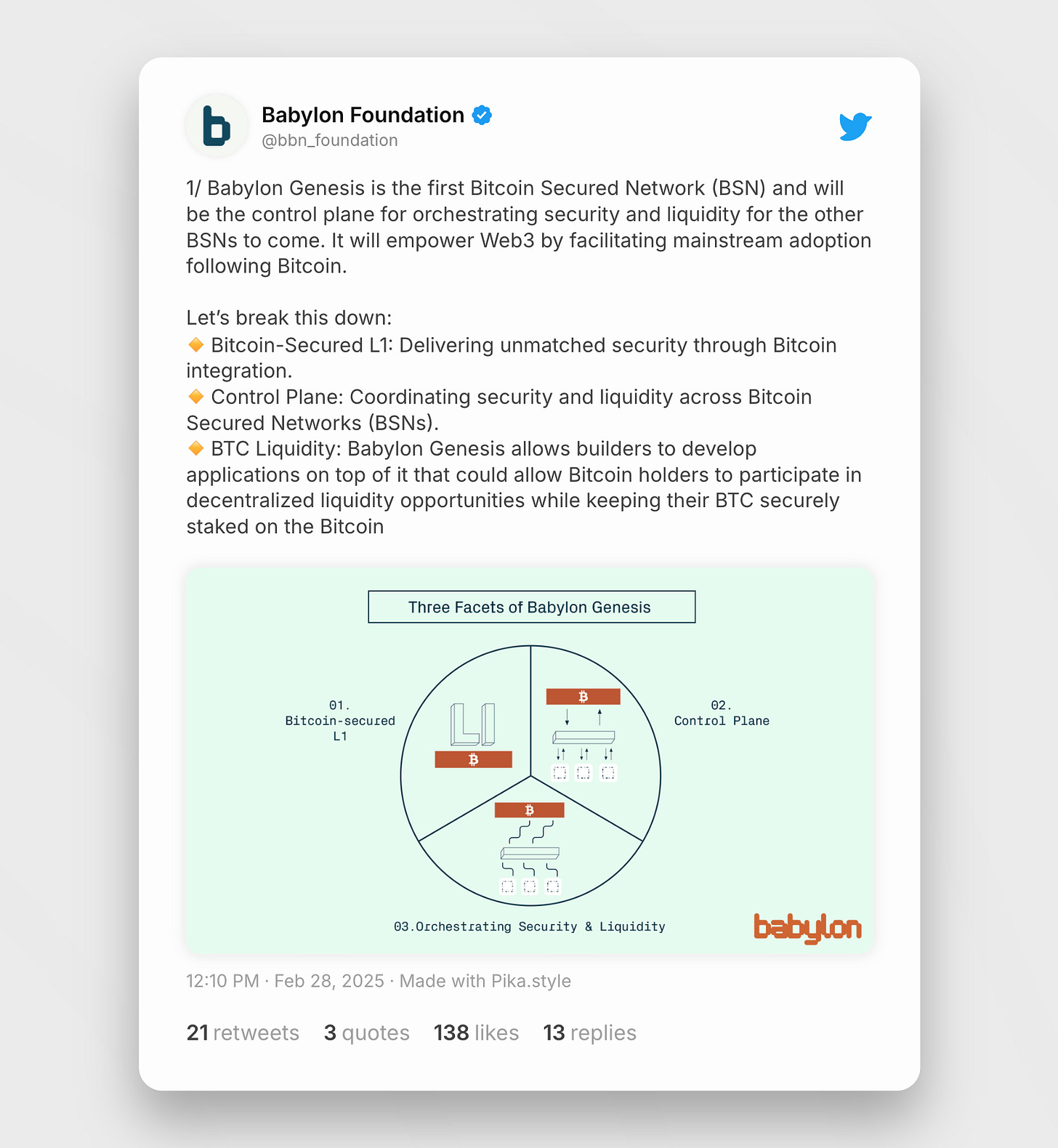Re:Staking Weekly #16
Restaking is Eating the World, EigenLayer's Consumer Adoption Plan, TADA's EigenLayer Integration, and Babylon's First Airdrop
Welcome to Issue #16 of Re:Staking Weekly! 👋
This week we explore why restaking can be a powerful mechanism for established protocols, expanding beyond its initial focus on new and growth projects. This perspective brings a strong dose of optimism to the restaking narrative, but also highlights the need for restaking protocols to adapt to evolving market demands.
As EthDenver wraps up, we've included Sreeram's analysis on EigenLayer's consumer adoption plan, TADA's EigenLayer integration, Babylon's first airdrop, and more.
Let's dive in! 🚀
Restaking is Eating the World
Have you seen the architecture of Unichain, Uniswap Foundation's newest creation?
Within this Ethereum L2 that hosts the renowned decentralized exchange, there's a new architecture called UVN (Unichain Validator Network) that decentralizes the conventional centralized sequencer.
Through the lens of restaking, it's essentially a custom node network requiring economic security to guarantee its service. Unsurprisingly, UVN will use UNI tokens to secure its network instead of ETH.
But why not?
Who needs restaking? (a revisit)
Uniswap Foundation's decision to skip ETH and restaking protocols like EigenLayer makes a lot of sense. As the world's largest DEX, it has little incentive to use external tokens when $UNI could use additional utility. Building a custom staking and restaking infrastructure is a marginal expense from their treasury.
This aligns with what we've observed before. Restaking currently offers the most value to new and growth-stage projects without established tokens.
For new projects, using ETH to bootstrap the network and validate the PMF is reasonable.
For growth projects, they can leverage restaking to avoid building their own infrastructure and gradually transition from ETH-based restaking to native token staking.
In the previous reasoning, large, established projects seemingly don't need restaking — they have the resources to build infrastructure themselves.
But I realized that I missed something important. Established projects actually have strong incentives to adopt restaking:
Established projects have strong incentives to foster an ecosystem. Restaking can quickly help to bootstrap a group of economically aligned allies.
Restaking is great for apps. 99% of the time you don't need to build an L1. The path of building the app first then vertically integrating into the protocol stack is becoming a norm.
Restaking is great for the native token that has established social consensus but can use additional utility.
Now the catch: I don't believe that established projects have enough incentives to use existing restaking infrastructure except for co-marketing opportunities. Instead, they'll likely to build their own systems to drive token demand and bootstrap ecosystem projects that restake with their token.
Consider Jito, an established Solana project with its own off-chain network (the Tip Router) secured by its native token, which also secures numerous new Solana projects. Similarly, HyperLiquid — a utility-first DEX — has developed a fast-growing ecosystem. I believe HyperLiquid restaking is inevitable.
The Future of Restaking: Beyond Established L1s?
The opportunity I previously overlooked was assuming that large projects wouldn’t use external assets to secure their infrastructure. In reality, they likely won’t — but restaking’s value prop still holds.
Restaking is a powerful tool for ecosystem growth, enabling new projects to attract capital by leveraging the yield-seeking behavior of token holders from established networks. Over time, as these projects grow, they shift from using external tokens for restaking to issuing their own, gradually building self-sustaining ecosystems. This cyclical process not only accelerates project maturity but also reinforces the broader restaking landscape, making it a sustainable and scalable mechanism for long-term expansion.
But are existing restaking protocols prepared to evolve with the market demand?Currently, most restaking solutions are designed for major L1s like Ethereum, Solana, and Bitcoin. However, the most innovative developments are emerging from alt-L1s that began as successful applications — like Unichain and HyperLiquid. This shift signals a fundamental change in how we should think about blockchain infrastructure and restaking.
For restaking to reach its full potential, the next generation of protocols must embrace:
Chain-agnostic architecture that supports both emerging and established ecosystems.
Robust native token support, reducing dependence on major L1 assets.
Direct interfaces between restakers and networks/AVS, minimizing intermediaries and strengthening community alignment.
Among today’s restaking leaders, EigenLayer stands out as the only one actively testing the boundary beyond the L1. Its $EIGEN token design, featuring off-chain forking capabilities, effectively positions it as a quasi-L1 — making it more attractive to established projects.
As the industry reconsiders the role of L1s following the Ethereum and Solana debate, it’s clear that restaking will continue evolving beyond traditional L1 structures. L1s as dominant Web3 products may rise and fall with market sentiment, but restaking as a mechanism will likely survive forever.
News Bites
Sreeram at ETHDenver: Driving consumer adoption through cryptographic trust in AI. A core theme for EigenLayer in 2025.
An intuitive chart illustrating the Othentic AVS framework — a valuable resource for aspiring AVS developers.
Not widely discussed yet, but keep an eye on TADA’s integration with EigenLayer. The ride-sharing company, focused on the Southeast Asian market, reported $20M in revenue in 2024.
Jito reaches $152.6M in restaking TVL — still marginal compared to other ecosystems, but good news for restakers as TipRouter is generating impressive fees with little competition.
Babylon, the BTC restaking protocol, is launching its airdrop soon. Check out their ecosystem architecture and airdrop plans.
That's it for this week's newsletter! As always, feel free to send us a DM or comment directly below with your thoughts or questions.
If you want to catch up with the latest news in the restaking world, give our curated X list a follow!
See you next week and thanks for reading,



